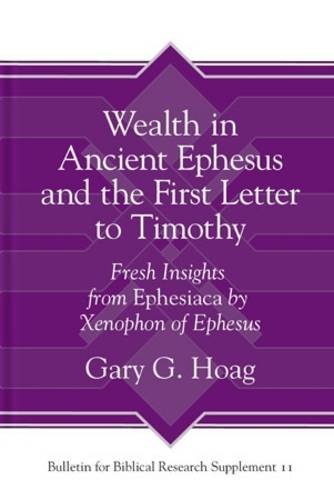Q6a.BEN: One factor that I would say your analysis overlooks in dealing with 1 Tim. 2.8-15 is that Paul is correcting existing problems— the men are grumbling, the women are over-dressing and interfering with whoever is (presumably Timothy) the person Paul left behind as leader and teacher of these new converts. The problem is an abuse of the privilege of teaching, when in fact the women in question first need to be quiet and listen and learn, and be in submission to the teaching (nothing is said here about women being in submission to men). You bring out the evidence about the word that occurs exactly once in the NT, authentein, and its semantic field, but you don’t deal with the fact that it means ‘to usurp (even by violence) authority over someone’ in a corrective context, and by contrast in a non-corrective context it means to exercise authority. Would you not agree that Paul is correcting problems in this 1 Tim 2 passage?
A6a.GARY: Rather than say “correcting existing problems” I would suggest that the author of 1 Tim desires to “chart a counter-cultural course for worship and life” for Ephesian men and women who have come to Jesus. When I say, worship and life, I am echoing the research of scholars like Steven Chang and Philip Harland who demonstrate that life and worship were interconnected in ancient embedded societies. As the focus of my research centered on the function of terms and themes, I believe the author of 1 Tim cares deeply for the Ephesian Christians and desires, boulomai, them to live lives of purity and modesty in a pagan context.
I must also note that 1 Tim 2:8 was outside the scope of my research as presented in BBRS 11, which centered on passages with the handling of wealth in view, specifically as 1 Tim 2:9-10 in the context of 1 Tim 2:9-15. What I would say about 1 Tim 2:8 in the Ephesian context just by considering biblical evidence, such as the riot scene described by Luke in Acts 19:23-41, is that men are presented as both angry and loud, shouting “Great is Artemis of Ephesians” for two hours. Though such behavior may have been the norm or acceptable for men who served Artemis, the author of 1 Timothy desired them to abstain from such behavior, but rather be seen as men of prayer with purity and self-control.
The author of 1 Tim also envisions life and worship for women in a new light (very different from the social and cultural norms set forth in Ephesiaca and other evidence), which why I like to say that 1 Tim 2:9-15 demythologizes life and worship for them. Rather than recount chapter 3 of BBRS 11, I will summarize it in this way: No longer is life and worship all wrapped up in learning in noisy contexts with recitation. No longer is it linked to plaited hair and sumptuous adornment like the goddess. No longer is it associated with promoting the Artemis/Isis/Diana myth that the goddess was the author of all life, and that sin came into the world through man. No longer need they fear death in childbearing for ceasing to serve the goddess of childbearing.
I think too many readers of this text have made assumptions about what it means without exploring the ancient evidence, without reading the myths that were prominently proclaimed, and without understanding what life was like for Ephesians before coming to know Christ. As those religious realities come into view, the text sounds less as a corrective text and sounds more like the deep desires of the apostle who ministered among the pagan Ephesians from about 52-54 and saw many come to faith in this bustling Mediterranean metropolis. With this teaching, they have a counter-cultural course for life and worship mapped out for them.













